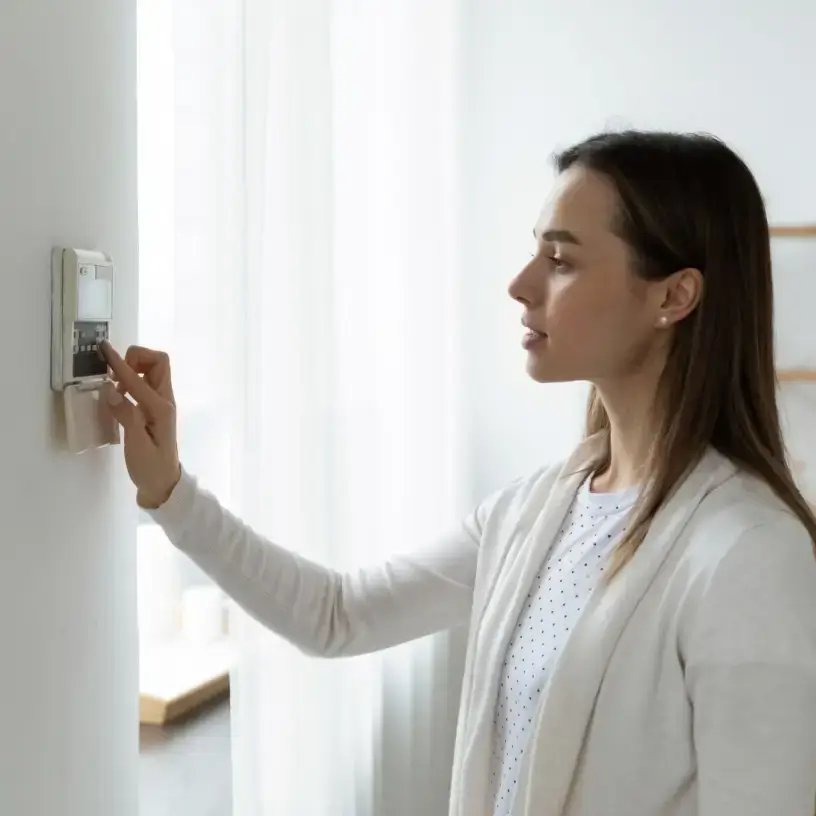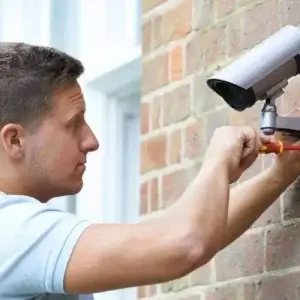Home / Compare Home And Content… / Your guide to home burgl…
Your guide to home burglary deterrence
How to secure your home against burglary



Key takeaways
- Securing doors and windows, replacing old locks and being vigilant with keys are just a few ways you can prevent burglary.
- Limiting hiding spots for burglars, locking up your home and not flaunting your belonging may protect your house from break ins.
- Consider getting help from your neighbours, family and friends to make your home look lived in while you’re away.
- Home insurance can cover damage to your home from a break in.
- Contents insurance can help replace items that are stolen.
Expert tips for burglary prevention in the home
Our resident home and contents insurance expert, Adrian Taylor, has helpful tips for protecting the home against burglary.

Have security devices installed around the home
Install security systems around your home if you can. Having them could even earn you a discount on your home insurance policy.
Be careful not to advertise your holiday online
Reconsider what you share online. Posting your holiday plans on social media could tell anyone when your house is empty.
Make sure your home looks lived in
If you’re going away, it’s important to make your home look like it’s still being lived in. You could put timers on your lights or ask friends or neighbours to pick up your mail, bring your bins in and maintain your lawns.
How many Australian homes are broken into?
According to the Australian Bureau of Statistics (ABS), more than 2% of Australians (217,600) had at least one break in during 2023-2024.1 Something was stolen from 71% of the households broken into, while 39% of homes had property damaged during the break in.
How to deter home burglaries
Thieves are looking for an easy target. So, the more difficult your home is to burgle, the less likely you are to be targeted. Crime-prevention measures and these burglary prevention tips and tricks can help you avoid break-ins.
Secure your doors and windows
- Replace hollow doors with solid wood or metal doors
- Install lockable security screens with woven stainless-steel mesh that can’t be cut
- If you have sliding doors or windows without any locks, use a window bar or a wooden dowel to prevent them from being forced open
- Install windows that open no more than 20cm to minimise the chances of someone crawling through it
- Adding security measures like bars over the windows can prevent people from sneaking in
- If a small person can fit through your pet door, you may need to replace or remove it. A pet door with a microchip reader can help to ensure your pets are the only ones using the door.
Replace the locks
If you’ve recently purchased a property, it’s worth replacing all the door locks (including any sliding glass doors) and ensuring you have window locks in place. As well as your home’s standard locks, you can also get these additional locks for extra security:
- Barrel bolts are sliding bolts that go on the inside of a door
- Chain locks lock the door to the frame by a connecting chain
- Deadbolt locks are secure locks that can only be opened by rotating the key
- Smart locks are electronic locks that offer features like auto-locking or code locks.
In addition, make sure you have a lockable garage door. Padlocks on your side gates and garden sheds could also make it harder for thieves to gain access to your property.
Know your neighbours
Getting to know your neighbours could help keep your home secure, especially if you have neighbours who don’t work during the day, such as stay-at-home parents, night workers and retirees. You could also join your local Neighbourhood Watch or local Facebook groups where locals post sightings of any suspicious activity.
Store high-cost items out of sight
If you have jewellery, memorabilia or cash, an easy way to protect these items is in a safe or lockbox. Your safe can also be used to protect items like:
- Passports
- Deeds
- Other important documents.
Mounting your safe on the wall or bolting it to the floor can stop a burglar picking it up and walking out with it.
Install security cameras and alarms
 CCTV or video surveillance can be a relatively affordable option for a homeowner. Security camera systems range in complexity and offer homeowners additional security and are available at different price points.
CCTV or video surveillance can be a relatively affordable option for a homeowner. Security camera systems range in complexity and offer homeowners additional security and are available at different price points.
Installing a loud security alarm system may also deter burglars from entering your home. Monitored home security systems, which alert the local police station when they go off, are another burglary deterrence option.
If you do install a burglar alarm, consider adding generic security signs or stickers to deter burglars. Specifying the type of security system you have installed could make it easier for them to work out how to disable your devices.
Be vigilant with keys
Make sure your keys are not in view from outside or within reach of a door or window that can be smashed open. Never leave spare keys in predictable hiding places outside your home. Insurers generally won’t cover instances where burglars enter your home with keys.
If you park your vehicle on a driveway or on the street, leave any garage keys or electronic remotes in your house. Keeping a garage remote in your vehicle can provide easy access to your home.
How to protect your house from break ins
Limit hiding spots
Cutting your garden shrubs and pruning trees limits places for thieves to hide, which can deter them from targeting your property. Also, don’t leave stools and ladders out in the open, as these could provide easy access to your home.
Secure your home
Unlocked doors and open windows could provide entry points for potential burglars. Even when you’re at home, consider locking your doors, gates, garage and windows.
It’s also smart to pack away garden tools and lock up your shed, as home burglars may use your tools to pry open the doors to your house.
Make your place look occupied (even when you’re not there)
If you’re going away on holiday, ask your neighbours, family or friends to:
- Keep an eye on your place
- Empty out your mailbox
- Take out and bring in the bins
- Water the plants
- Park in your driveway to make it look like you’re still home.
Don’t flaunt your belongings
It’s worth taking the following precautions with items around your home:
- Block the view into your home with curtains or blinds and keep them drawn, particularly if they face the street
- Don’t place valuable items such as laptops or tablets in full view of a window
- If you have an outdoor TV, bring it inside when you go on holidays
- Cut up and dispose of boxes from expensive items and don’t leave them sitting next to your rubbish bins
- Try and keep your vehicle off the street by parking it inside your carport or garage (if you have one).
Manage your lighting
Installing motion-activated sensor lights or timed exterior lighting is a great way to secure your property against unwanted visitors after dark. These bright lights turn on when they sense motion or at a particular time, making it difficult for potential burglars to conceal themselves.
If you go on holiday, having timed internal lights or setting a radio or TV on a timer can also make it sound like you’re at home.
Home and contents insurance
Does home and contents insurance cover burglaries?

Home and contents insurance policies generally provide cover for burglaries. Here’s a breakdown of what home insurance and contents insurance cover:
- Home insurance can cover the repair and replacement costs for loss or damage inflicted from burglaries, including broken doors, windows and locks. If you rent out your property, your landlord’s insurance should take care of this.
- Contents insurance can cover your belongings in the home if they’re destroyed, damaged or stolen. This can include jewellery, clothing, furniture, appliances, electronics and other home fixtures and fittings.
Home and contents policies vary between insurers, so always review the policy’s Product Disclosure Statement (PDS) to know exactly what is and isn’t covered.
Will my belongings be replaced if they’re stolen?
Yes, your items can be replaced if they’re stolen from your home. Some portable items may also require additional personal effects cover (also known as portable contents cover).
Consider keeping your receipts to prove your ownership of stolen items and how much they’re worth.
What if my belongings are taken from me while I’m outside my home?
Some policies give you the option of adding portable contents cover at an extra cost. This benefit covers some items you take outside the home on a regular basis if they’re stolen, lost or damaged. These items may include:
- Laptops
- Bicycles
- Camera
- Handbags
- Clothing.
Check your insurer’s PDS for any limits and exclusions that may apply.
Meet our contents insurance expert, Adrian Taylor
As a General Insurance expert with over 13 years’ experience in financial services, Adrian Taylor works to make it easier for homeowners, renters and landlords to protect their home and contents. He believes it’s important for all residents (whether they rent, own or lease) to have adequate financial cover for their property and belongings in case the worse should happen.
Want to know more about home and contents insurance?
1 Australian Bureau of Statistics – Crime Victimisation, Australia – 2023-24. Published 2025. Accessed March 2025.
